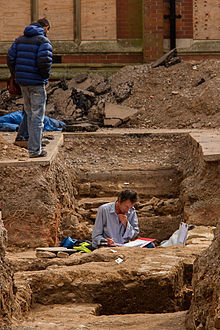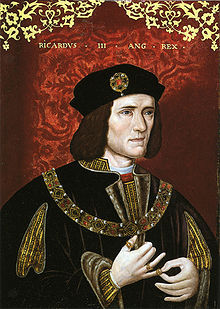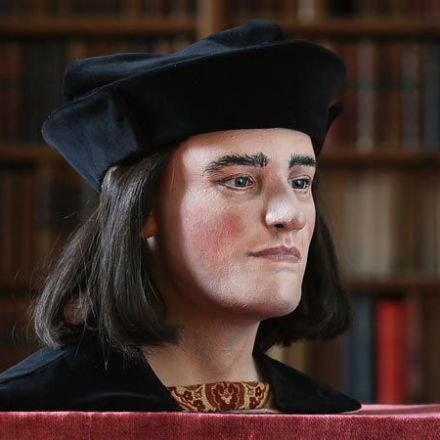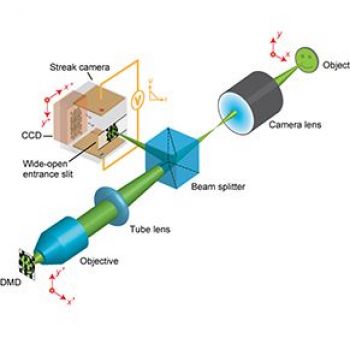The Real Richard III
3D reconstruction and linguistic research reveal English king’s face, voice.
Continue ReadingMore information:
The exhumation of Richard III of England in September 2012 was the result of an archaeological excavation in the English city of Leicester by a team led by the University of Leicester Archaeological Services (ULAS). The last king of the Plantagenet dynasty, Richard III was killed in the Battle of Bosworth Field on 22 August 1485. His body was brought to the house of the Greyfriars in Leicester where it was buried in a crude grave. In August 2012, a dig commissioned by the Richard III Society was carried out on the Greyfriars site by ULAS archaeologists, who uncovered a human skeleton on the first day of work. It soon became apparent that the body was that of a man in his thirties who had suffered multiple wounds from a variety of weapons and had been hurriedly buried in a grave that was too small. The skeleton had a number of unusual physical features, most notably a severe curvature of the back that caused the right shoulder to be higher than the left.
Scientific analysis showed that the man had probably been killed either by a blow from a large bladed weapon that cut off the back of his skull, or by a halberd thrust that penetrated his brain. There were signs of other wounds on the body, which had probably been inflicted as "humiliation injuries" on a corpse that had been stripped of its armour. The bones' age at death matched the age at which Richard died; they were dated to approximately the period of his death and were mostly consistent with physical descriptions of him. DNA analysis also showed that mitochondrial DNA extracted from the bones matched that of two 17th-generation matrilineal descendants of Richard's niece Anne St Leger. On the basis of these points and other historical, scientific and archaeological evidence, the University of Leicester announced on 4 February 2013 that the skeleton had been positively identified as that of Richard III.
On 4 February 2013, the University of Leicester confirmed that the skeleton was that of King Richard III. Richard Buckley of ULAS told a press conference: "It is the academic conclusion of the University of Leicester that beyond reasonable doubt, the individual exhumed at Grey Friars in September 2012 is indeed Richard III, the last Plantagenet King of England." Buckley's announcement was greeted with applause. The wounds on the skull were consistent with the medieval chroniclers' description of Richard being killed by blows from a sword and a halberd. The identification was based on mitochondrial DNA evidence, soil analysis, and dental tests, as well as physical characteristics of the skeleton which are highly consistent with contemporary accounts of Richard's appearance. Osteoarchaeologist Dr. Jo Appleby commented: "The skeleton has a number of unusual features: its slender build, the scoliosis, and the battle-related trauma. All of these are highly consistent with the information that we have about Richard III in life and about the circumstances of his death. Taken as a whole, the skeletal evidence provides a highly convincing case for identification as Richard III."
Professor Caroline Wilkinson, Professor of Craniofacial Identification at the University of Dundee, led the project to reconstruct the face with a commission from the Richard III Society.
-































Join the Discussion